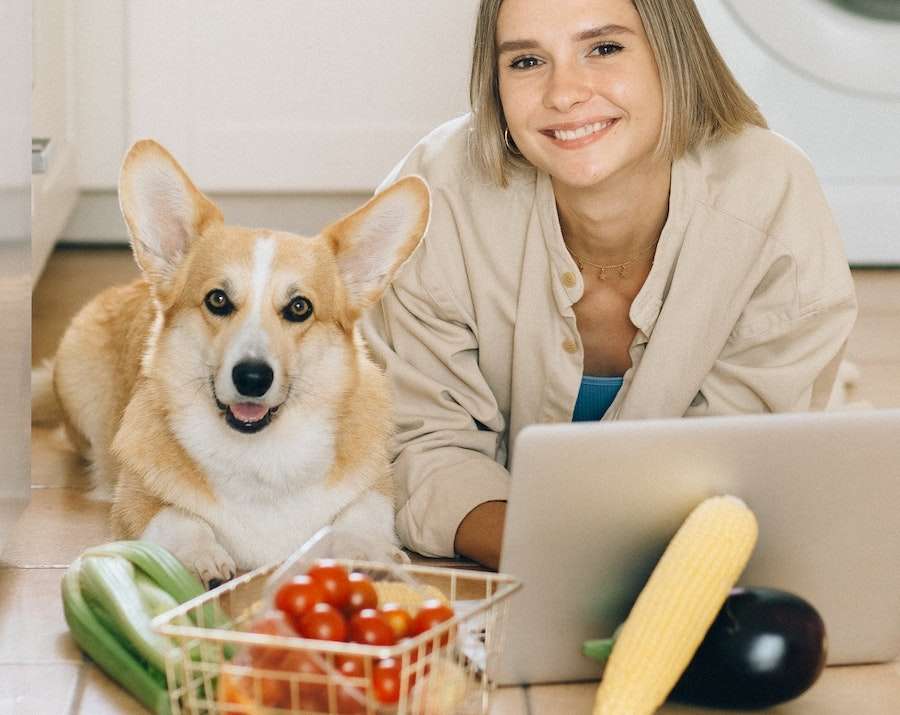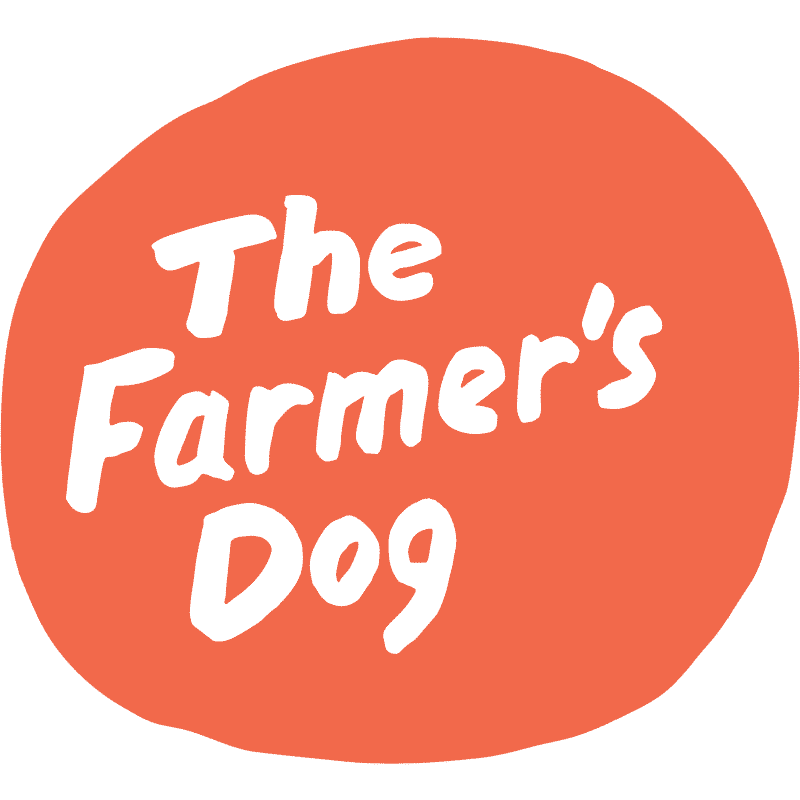The Dog Tale is reader-supported. We may earn a commission if you buy something through our site; this doesn’t change our recommendations.
Vegetables are an important part of a dog’s diet, just as they are with you. They’re full of essential nutrients, fiber, and vitamins that dogs need for a healthy digestive system, immune system, coat, and more. However, dogs cannot eat all of the same foods as you or I. So which vegetables or fruits are safe for dogs to consume?
Keep reading to learn about the safest vegetables to feed your dog, examine which provide the most nutritional benefit, and, most importantly, which foods to avoid.
In this guide:
- What vegetables are good for dogs?
- What vegetables are bad for dogs?
- What fruits are good for dogs?
- How to easily feed your dog fresh meats & veggies
What vegetables are good for dogs?
Although dogs should eat a primarily meat-based diet, some vegetables are fine. Our furry friends are omnivores, after all. (That means they require both plants and meat for a healthy, balanced diet.) The key is to feed them the right vegetables and to give them the right amount for their size.
This list isn’t comprehensive, but it does cover some of the best vegetables for dogs. Just remember that everything you feed your dog should be in moderation—too much fiber at once could actually upset your dog’s digestive system. Also, don’t forget to feed small dogs bite-sized pieces to avoid choking and blockages.
- Fresh, human-grade dog food
- Automatic shipping, so you never have too much or too little; cancel any time
- Get 50% off your first delivery
Best vegetables for dogs:
- Carrots: Most dogs love raw carrots. They’re crunchy, juicy, and sweet. We love feeding our dog carrots because they help keep their teeth clean, and they’re a great source of fiber that aids a healthy digestive system.
- Celery: Just like carrots, these are a good all-around, fibrous snack. Celery is also a good treat replacement for overweight dogs since it’s low in calories.
- Peas: They’re small and easily mushed, so there’s no danger of blockages. Plus they provide additional protein. However, unless your dog has a restricted diet, peas shouldn’t replace meat-based protein.
- Green beans: Good cooked or raw, these low-calorie veggies are teeming with vitamins and minerals. Whole green beans are a major, visible ingredient in Spot & Tango’s Beef & Barley UnKibble recipe. You can learn more in our Spot & Tango dog food review.
- Broccoli: Best given in small amounts, broccoli provides dietary fiber and vitamins and, when served raw, keeps your dog’s teeth clean.
- Brussels Sprouts: Just as with humans, brussels sprouts can make your dog gassy. But they boast a range of beneficial antioxidants and nutrients.
- Lettuce: Although it doesn’t pack a ton of nutritional value, lettuce offers digestive fiber and has a high water content, so it’s safe to toss your dog in moderation. Save the dressing for yourself.
- Cucumber: Again, these are mostly water and super low in calorie content. But they still provide a crunch your pup will love, so they make for a great training treat.
- Sweet potato: Correctly prepared, this nutrient-rich root vegetable makes an excellent treat for dogs. We slow-roast small cubes of sweet potato to make a crunchy, low-calorie training treat for our pup. It’s full of vitamins and none of the chemical preservatives other treats have. Sweet potato is also a foundational ingredient in many fresh dog food recipes, such as The Farmer’s Dog’s beef recipe.
- Pumpkin: Cooked pumpkin is another excellent source of fiber and vitamins for dogs.
How to prepare the veggies
You can prepare your dog’s veggies in a variety of ways. Generally, if you could eat the vegetable raw, that’s the best way for your pup to consume it as well. This is because the cooking process destroys some of the veggies’ nutritional value. Plus, raw, crunchy vegetables help keep your dog’s teeth clean.
Veggies that you wouldn’t normally eat raw, such as brussels sprouts and sweet potato, can be roasted, sauteed, or steamed. Steaming your veggies or cooking them sous vide are two of the healthiest ways to prepare them, but slow roasting veggies can also enable you to maintain a crunchy texture while making the food consumable.
If you’re interested in the sous vide method, which boils the ingredients in sealed pouches to maintain their juices, flavors, and nutrients, check out our A Pup Above review. It’s the only fresh dog food company we know of that uses the sous vide method.
What vegetables are bad for dogs?
Dogs aren’t just cute—they’re also extremely good beggars. So it’s completely understandable that we often sneak our pups a treat from our dinner plates. But what if you give your dog something that they can’t digest well, or worse, something toxic? Before feeding your dog veggies, review this list.
Veggies to avoid:
- The Allium family: Vegetables in the Allium family—such as onions, leeks, garlic, and chives—are poisonous to our animal companions and can cause vomiting, diarrhea, anemia, and a host of other issues.
- Mushrooms: Certain mushroom species can be toxic while others are ok; but it’s hard to know which is which, so it’s best to avoid the whole fungi family unless they come in a pre-made food produced by a veterinary nutritionist. Always avoid wild mushrooms.
- Macadamia nuts & almonds: While not technically veggies, many common nuts are either difficult to digest or outright poisonous to dogs. Macadamia nuts can cause severe pancreas and neurological problems in dogs, similar to grapes and raisins. Almonds in their whole nut form are hard for dogs to digest. Peanuts are okay in moderation.
- Sweet corn: While not poisonous, corn offers little nutritional value, is difficult for dogs to digest, and is likely to cause an upset stomach. If eaten in large amounts or by small breeds, it could also cause intestinal obstruction.
- Avocado: Certain parts of the avocado contain high levels of Persin, which is a toxin. The flesh has a less concentrated dose, but it’s best to avoid the risk!
- Protect your pet in seconds
- Accident & Illness + Optional Wellness coverage available
- Policies start at just $9.99/mo
>> Read more: My Dog Has Loose Stools and Smelly Gas
What fruits are good for dogs?
Just like vegetables, certain fruits can upset your dogs’ bellies or even poison them. A lot of it has to do with acidity and stones or fruit pits. However, other fruits are great for training. If in doubt, check with your vet.
Can dogs eat bananas?
Yes, but they’re carb-heavy and have a high sugar content, so only feed them to your dog in small amounts as an occasional treat. Banana can also make for a good homemade treat ingredient. Avoid feeding your dog banana peels, however, as the excess fiber will likely cause stomach upset and vomiting.
Can dogs eat apples?
Absolutely—once deseeded and cored, apples are an excellent snack for dogs. They provide fiber for digestion, keep the teeth clean, and they help keep your pup’s coat and skin healthy. However, apple seeds contain arsenic, so avoid feeding them to your dog—especially small breeds.
Can dogs eat strawberries?
Yes, but only in moderation, since they’re very sugary.
Can dogs eat oranges?
Most dogs don’t like the acidity of oranges, but if your pup does, go ahead. Just make sure to remove all the skin and any seeds.
Can dogs eat berries?
Raspberries are great as they’re low in sugar and high in anti-inflammatories. Blackberries and blueberries are an excellent source of vitamins, too. Remember to give them in moderation to avoid stomach upsets.
We like to freeze blueberries in an ice cube tray to use as a cool, slippery treat for our dog in the summer months.
>> Read more: Can Dogs Eat Fish Bones?
What fruits should a dog avoid?
- Avoid feeding your dog pitted fruits, like cherries and plums, as the pits can be toxic and cause stomach pain and blockages.
- Steer clear of limes and lemons—the acidity can upset their stomachs.
- Grapes and raisins are an absolute no-go—that whole fruit family is poisonous to dogs and can cause acute anemia and kidney failure in dogs.
- Tomatoes should be avoided—while ripe tomato is considered safe, green tomatoes and the green parts of the tomato plant can be toxic. In general, you should avoid feeding your dog members of the nightshade family, which also includes peppers. Not all of this family are bad, but it’s easier to avoid them altogether. Unsurprisingly, hot peppers like jalapenos are bad for dogs.
Again, this isn’t an exhaustive list, so always be sure to do your research before feeding your dog a new food.
How to easily feed your dog fresh meats & veggies
Feeding your dog a healthy diet of high-quality meats and fresh veggies is a great way to boost their nutrition. However, preparing fresh food for your dog is time-consuming, and it requires an intimate knowledge of canine nutritional needs, not to mention your dog’s unique situation.
Not every dog is the same. Some have health issues, others are overweight, and then there are the senior dogs—every canine is different, so a bespoke feeding plan that is prepared for you might be a better option.
If you live in the US, three of our favorite brands are The Farmer’s Dog, Nom Nom Dog Food, and Ollie Dog Food. All three companies prepare vet-developed human-grade recipes and deliver perfect portions to your door on a monthly basis. Or, if your pet has acute health issues that require a vet-prescribed diet, check out our Just Food For Dogs review. It does more than any other fresh food company to cater your meal plan to your dog’s specific needs. And if you’d prefer to keep your dog on a raw food diet, check out our We Feed Raw review.
Dogs are our best friends and furriest family members, so it makes sense to give them a diet as good as our own. Just remember to do your research or rely on fresh food services to guarantee you’re feeding your pup dog-safe ingredients that will help them live a healthy, happy life.
>> Read more: Best Soft Dog Food for Senior Dogs
Let's bark a little
Get our latest updates and articles right in your email.
We won't bark too much. Promise.
Home Remedy for Dog Joint Pain
Yorkie Foods: What They Can Eat & What to Avoid
Nom Nom vs The Farmer’s Dog: Which Food Service Is Best?
Best Wet Dog Food for Senior Dogs: Healthy Options
PetPlate Review: Fresh Dog Food Delivered to Your Door



